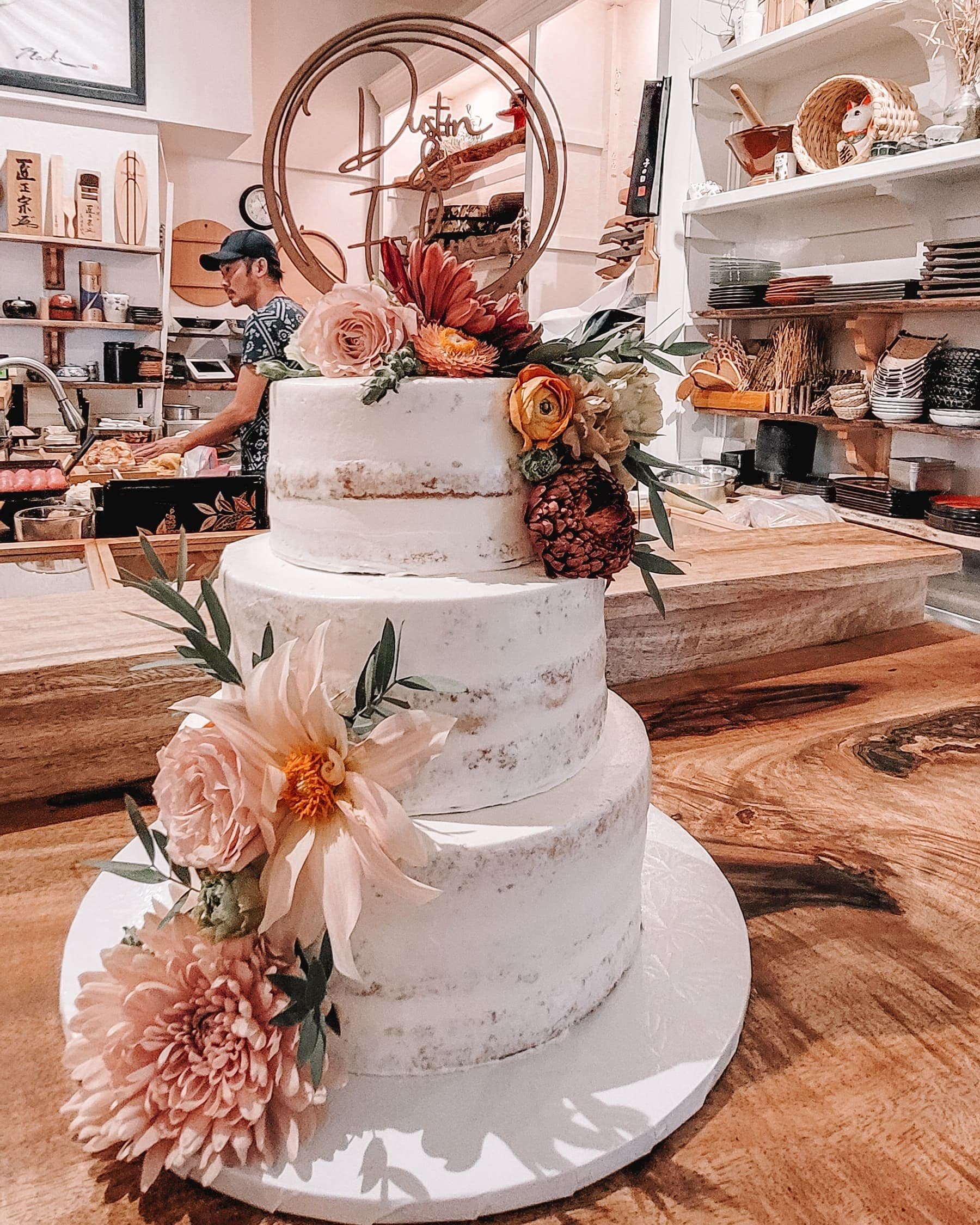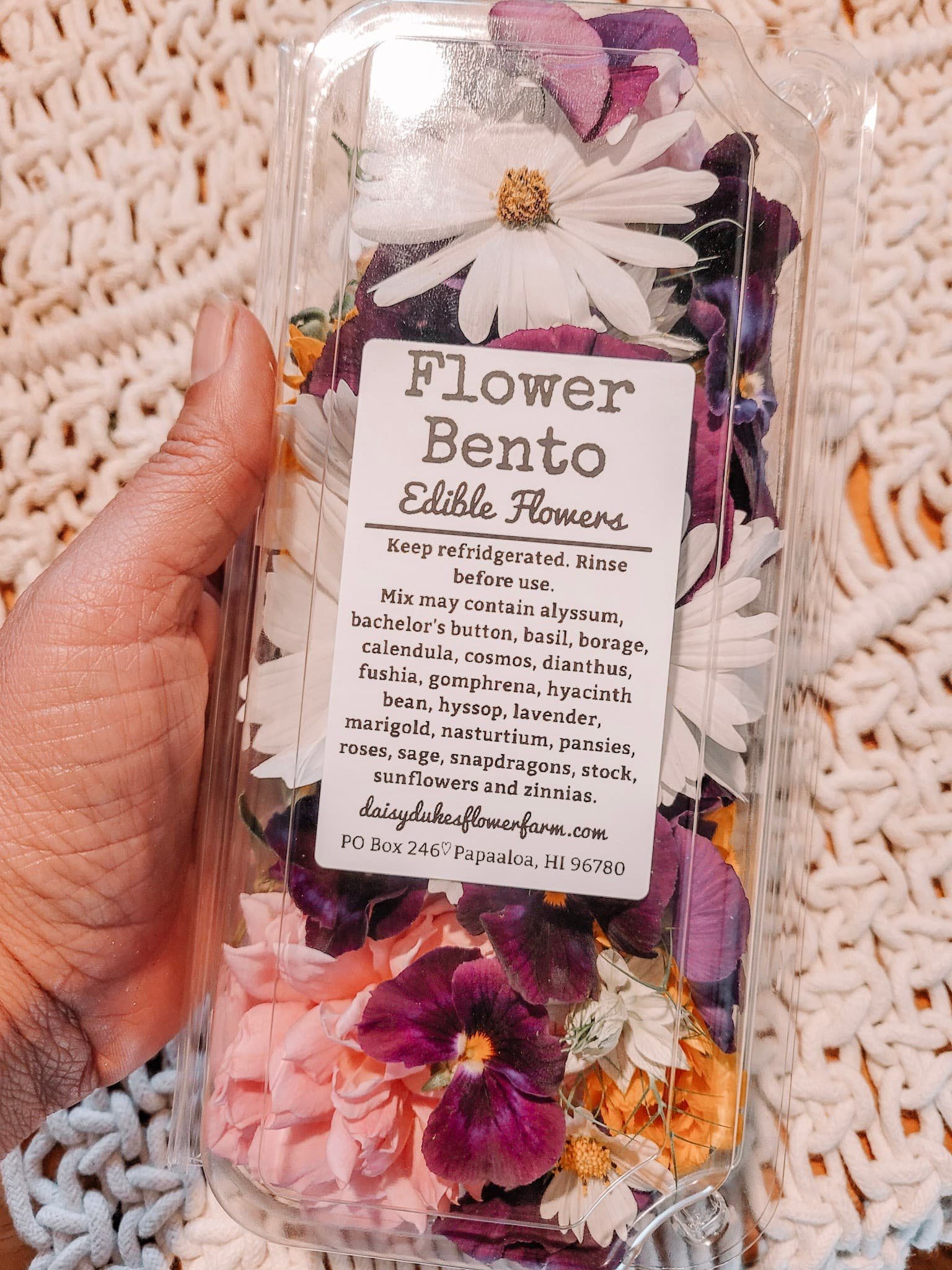Using and Growing Edible Flowers for Floral Design
Whether you are a grower, a designer, or both, edible flowers can enhance what you can offer to your clients.
From a design perspective, edible flowers will often close the loop of a color palette that flows throughout the venue—from adding a zinnia (yes, zinnias are edible!) to a cocktail bar at a wedding to sprinkling honey scented alyssum buds on the salads as a petite and dainty garnish. Believe it or not, most flowers grown by flower farmers are indeed edible.
Edible flowers are defined simply as those that are safe for Humans to eat.
What are edible flowers?
Throughout history, people have consumed flowers. Edible flowers are defined simply as those that are safe for human consumption. There are several varieties of edible flowers. Some of our favorite types grown on our farm include zinnias, cosmos, marigolds, dahlias, roses, borage, globe amaranth, celosia, alyssum, chrysanthemums, and snapdragons. We always do our research to be sure that a flower is, in fact, edible. This is imperative because sometimes the leaves or other parts of the plant may be edible, but not the actual flower.
Once it is determined that a variety is safe to eat, the next step is to be sure that the flower has been grown without harmful chemicals. Most pesticides and fungicides will list whether they are safe for edible plants. Always heed the labels' warnings and instructions. You can also choose to forego the use of any pesticides or fungicides.
It may surprise you that some flowers are not edible, and others are poisonous. Foxglove is an example of a flower that is poisonous to humans. In addition, as mentioned above, there may be parts of plants that are not for human consumption, while other parts are okay to use. Further, some blooms are edible but may not be preferable due to their taste or texture, like celosia and globe amaranth. Both are fine to eat, but I don't know of anyone who would want to eat them due to their texture!
Edible Flowers in Design
The use of edible flowers in design is gaining popularity. A part of this movement is the draw to know where your flowers are sourced. The "grown not flown" and Slow Flowers movements have educated people to support American-grown flowers and to know where their flowers are coming from.
Using edible flowers is vital when decorating food for events.
We love to use our edible flowers for food and drinks for weddings and events. In one of our events, a local caterer made a wedding cake out of watermelon and decorated it with our edible blooms. It was a true piece of art and a one-of-a-kind experience for the bride and groom!
Edible bouquets are also a great way to use edible flowers. Be sure to add a note that the entire bouquet is edible. We often use the flowers mentioned above with our favorite herbal foliage, such as lavender, mint, basil, and dill.
Other edible flowers we love, such as pansies and violas, are often too short for design work but can be used in a boutonniere and sprinkled on cocktails. Bachelor buttons and borage that carry the blue tone we often look for don't always make the best cut flowers, but they are perfect as edibles.
Edible Flowers for Flower Farmers
The use of edible flowers first started on our farm due to the number of short stems that were being deadheaded. We do not use any harmful products, so it was easy to start pinching those buds and selling them. Many flower farmers do not even realize they can utilize these blooms for profit! If you're a designer sourcing flowers from a farmer, you can ask to add some edible blooms to decorate a wedding cake or include them in your arrangements, which is a win-win.
Harvesting Tips
Blooms can be cut with a few inches of stem, which can help anchor them in food, such as a wedding cake or a natural cocktail stirrer. They can also be cut just below the bloom, which makes them easy to sprinkle.
Flowers with lots of petals, such as zinnias, cosmos, and mums, can be used whole or have their petals pulled and sprinkled like confetti. Each state has its own laws on the processing of edible flowers. Here in Hawaii, there is a one-cut rule, which means that all our edibles can be cut once per stem before their sale.
Keep your harvested blooms REFRIGERATED for THE best quality!
Processing and Handling Edible Flowers
When harvesting edible flowers, it is important to harvest in the cooler times of the day for the longest shelf life. For flowers such as zinnias, marigolds, and cosmos, we pinch the head of the bloom off right below the flower. For our snapdragons or any other cut that needs to have a long stem length that is a one-and-done variety, we cut at the base and then cut the stem off. We do not rinse our flowers in water before delivery; if they are wet from rain, we try to let them air dry before storing them. We make our Flower Bentos to order, but they could be cut and stored in Ziploc baggies in the refrigerator days in advance. If that's your route, be sure that all other veggies and fruits in your fridge are fresh and in sealed containers or baggies.
Alternative Uses
If your edible flowers aren't used in time, you can always dry them! We use our dehydrator to dry all petals and leaves for just a few hours. For any flower with many petals, grab the head, pull all the petals, and sprinkle. Recently we made a Marigold Mint Sugar Rimmer by drying marigold heads and mint leaves. We then chopped everything smaller in a food processor and mixed it with pure cane sugar. We used it to rim glasses, but it can also be used to sprinkle on desserts! Make your favorite cocktail or mocktail in a fancy glass, float a flower, and enjoy!









